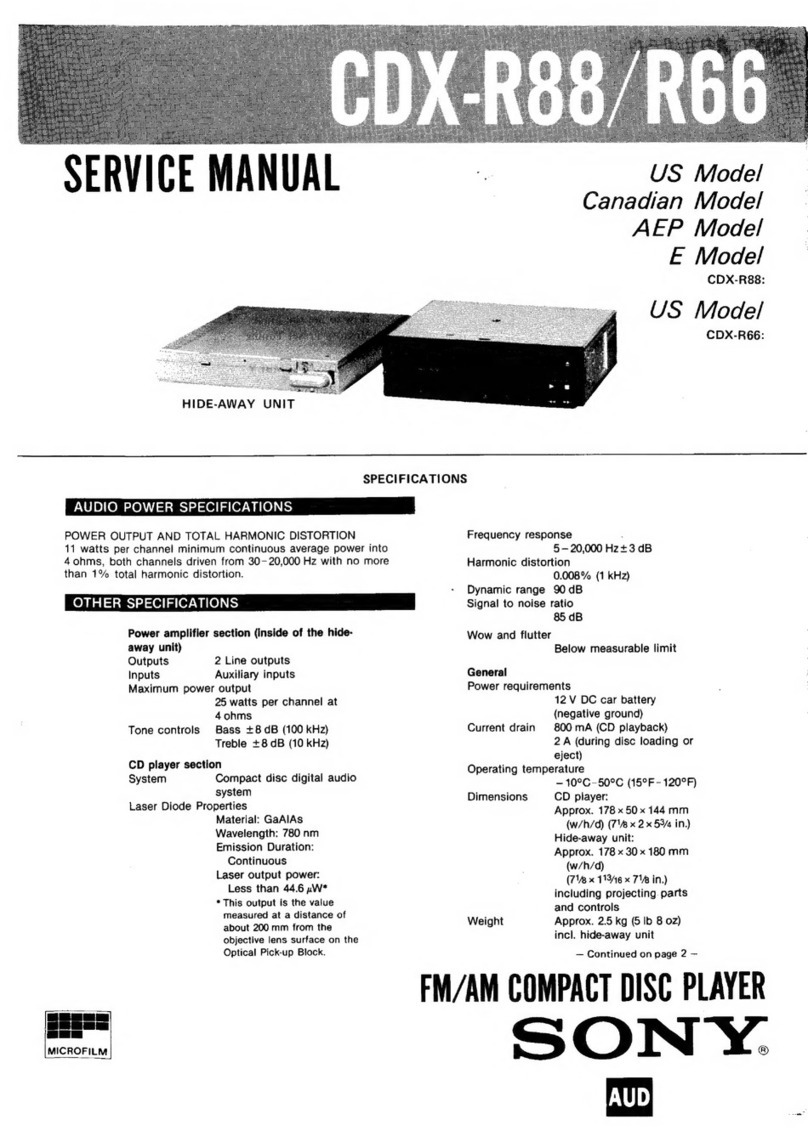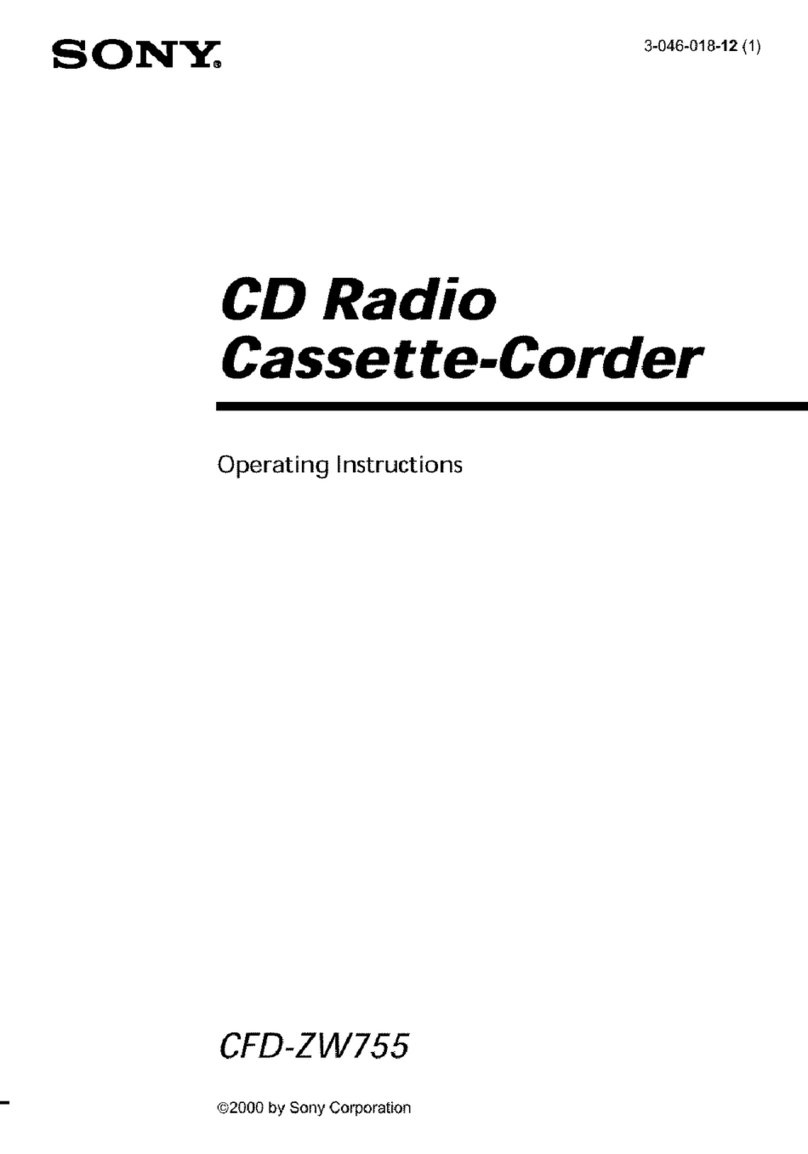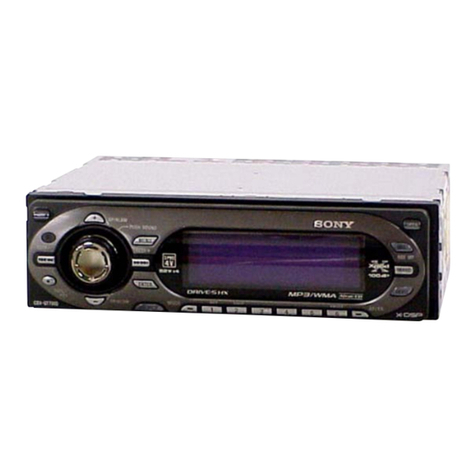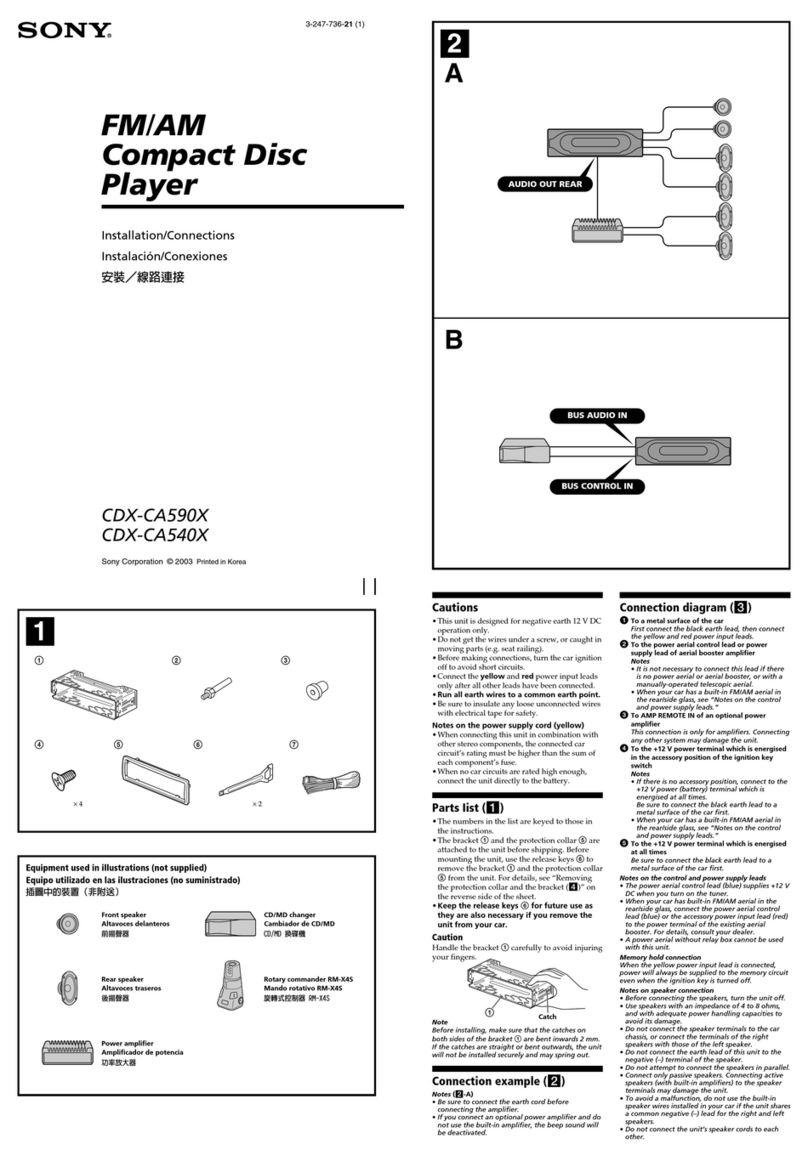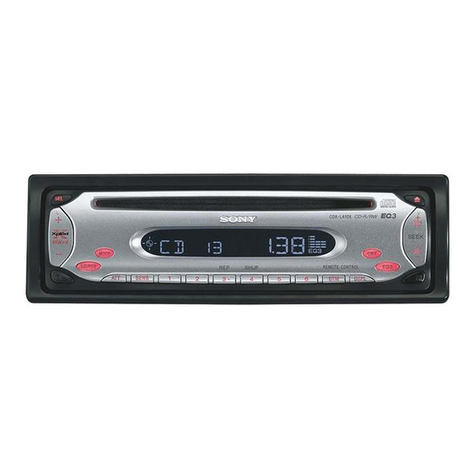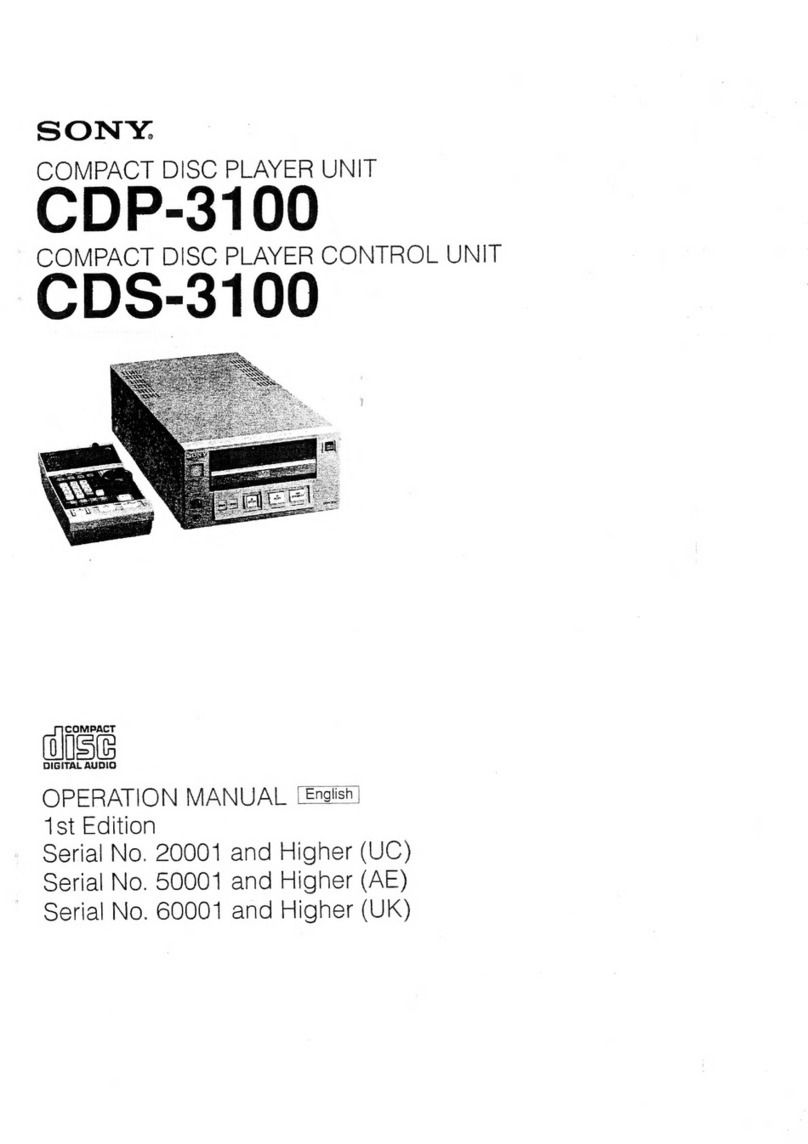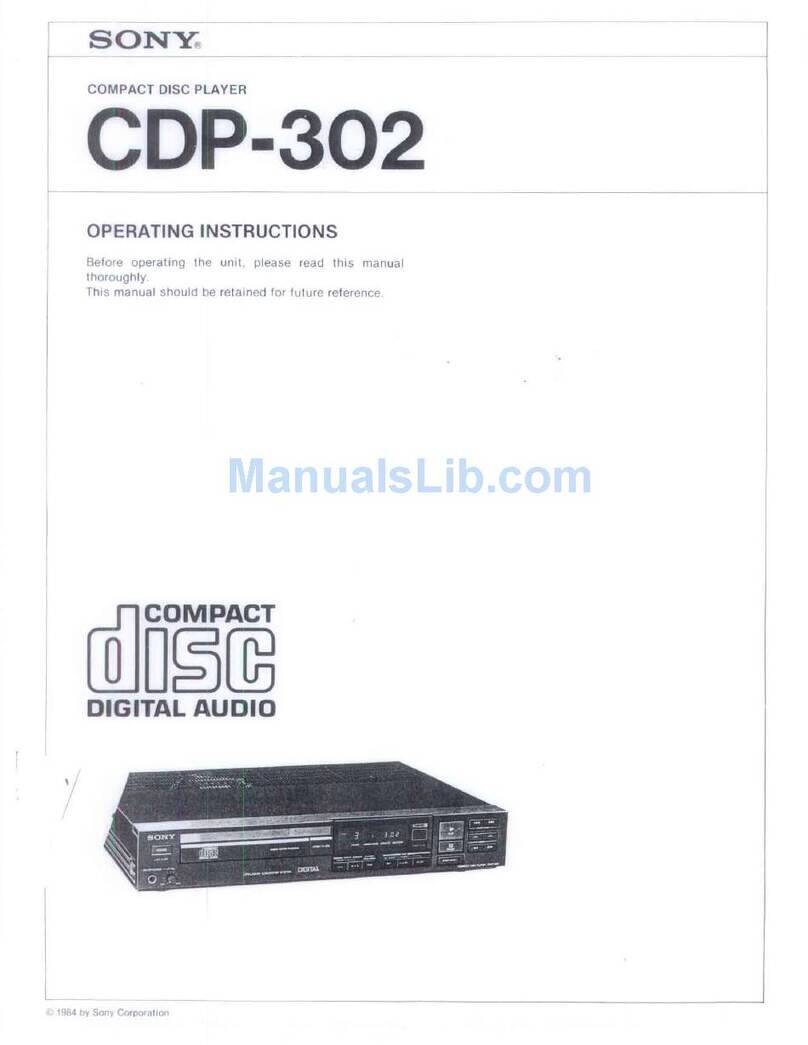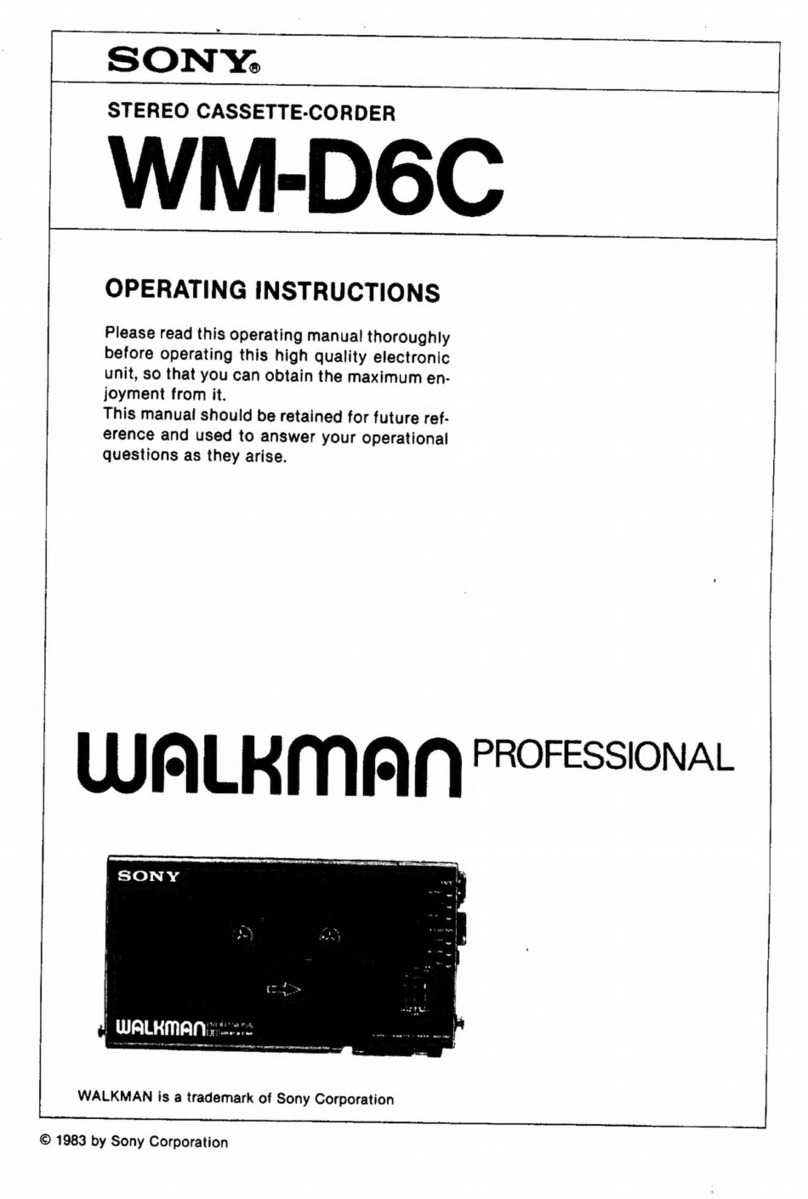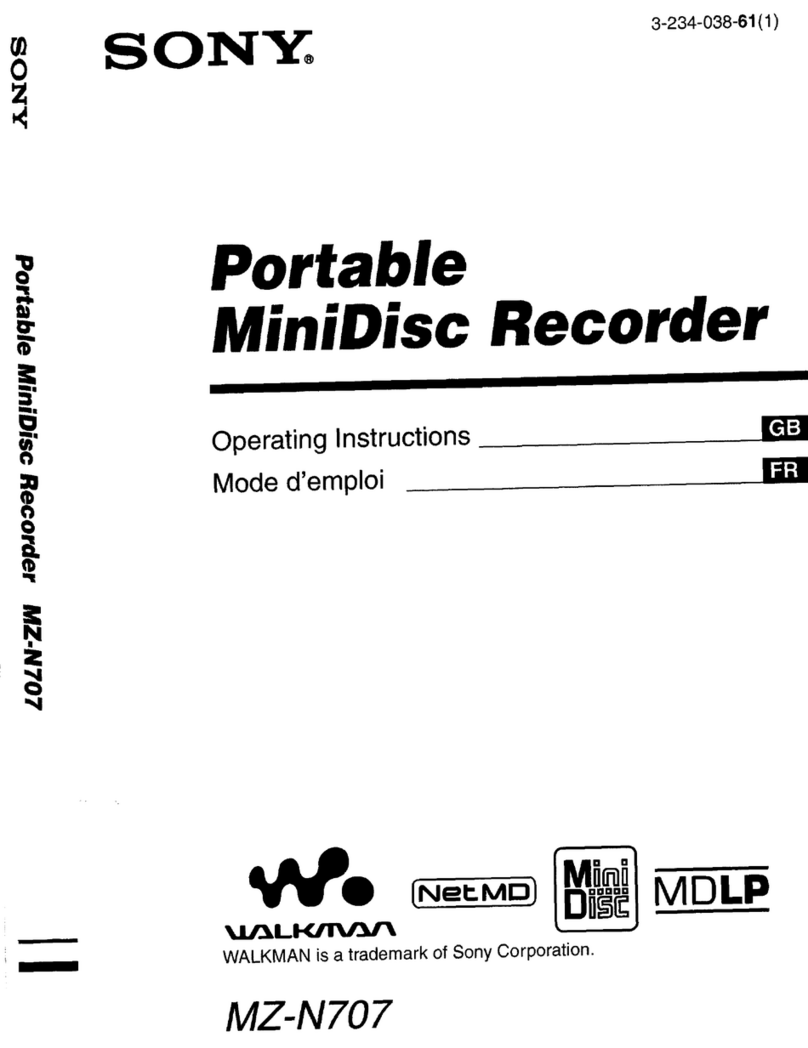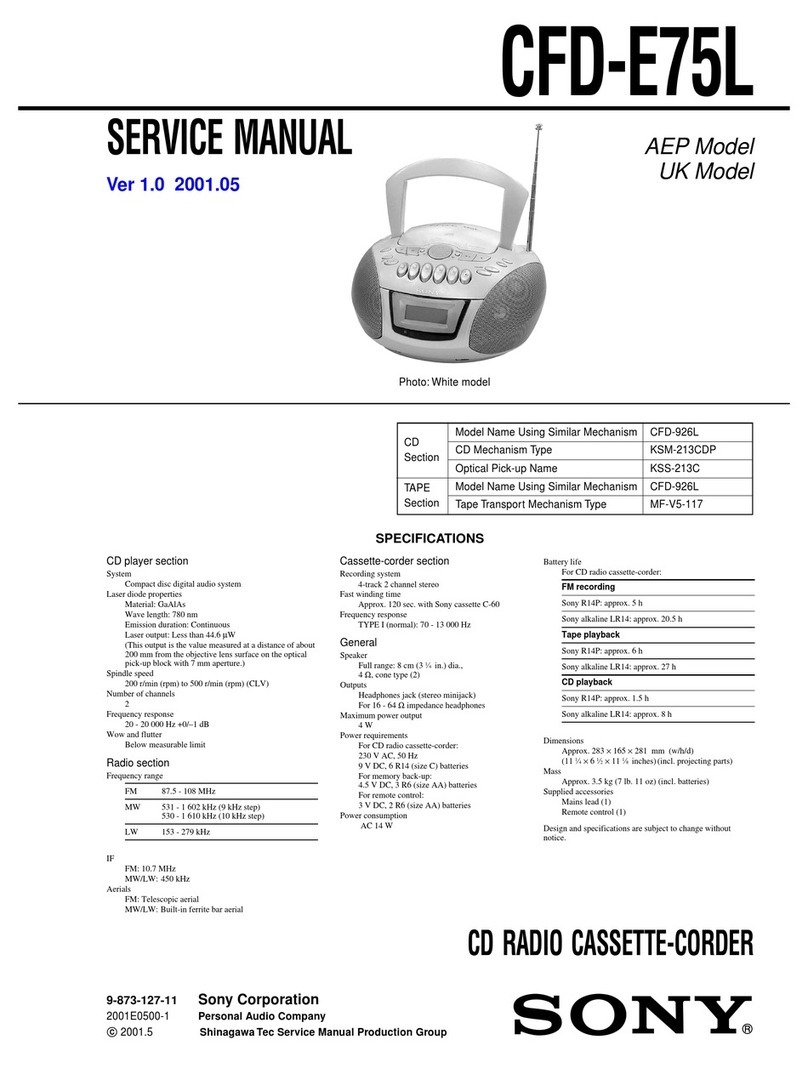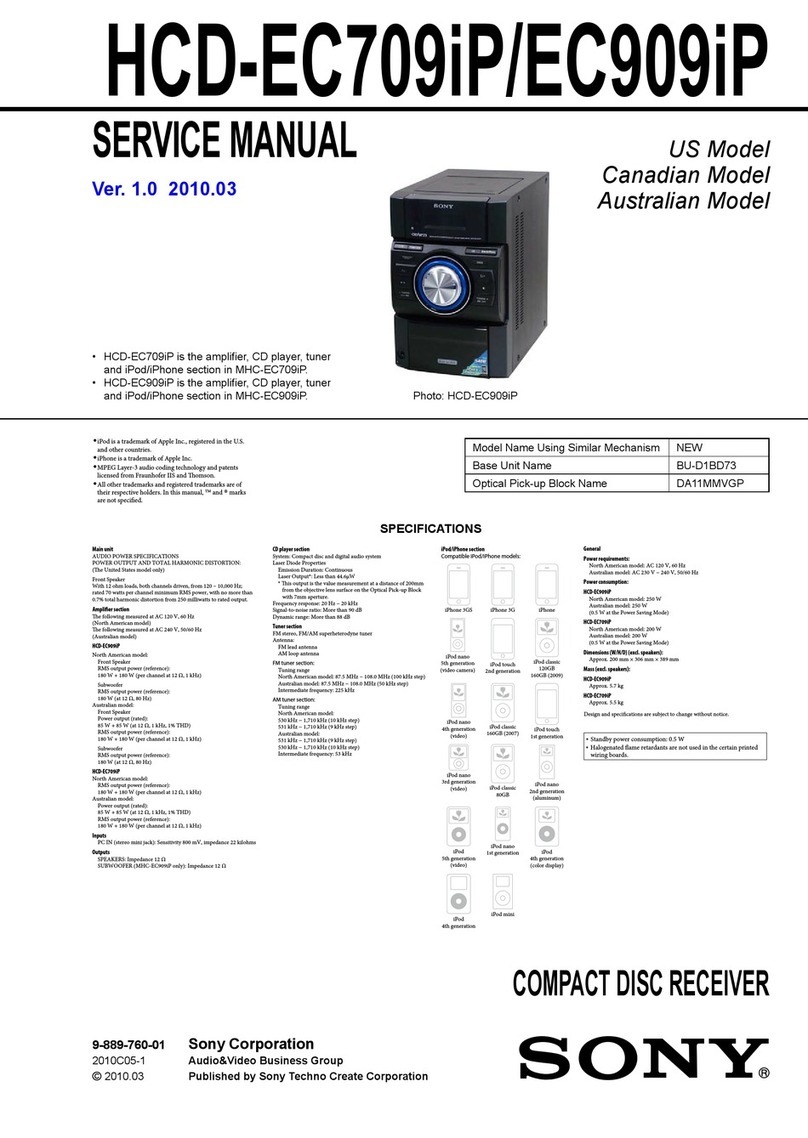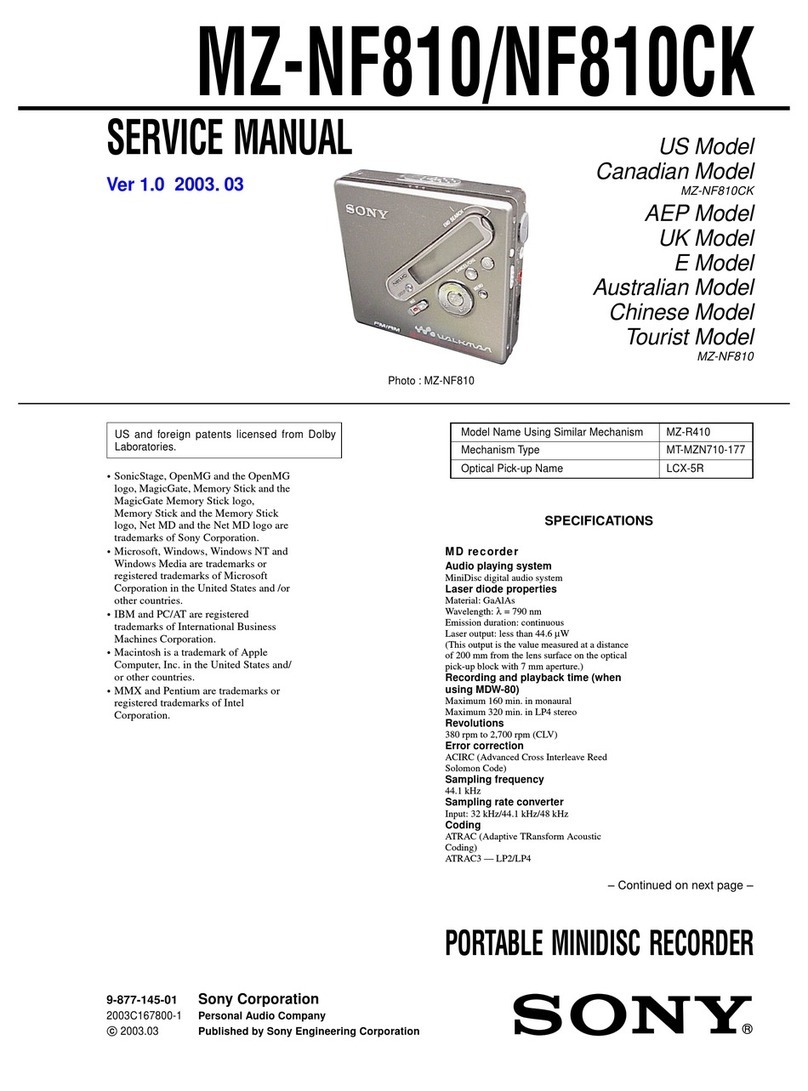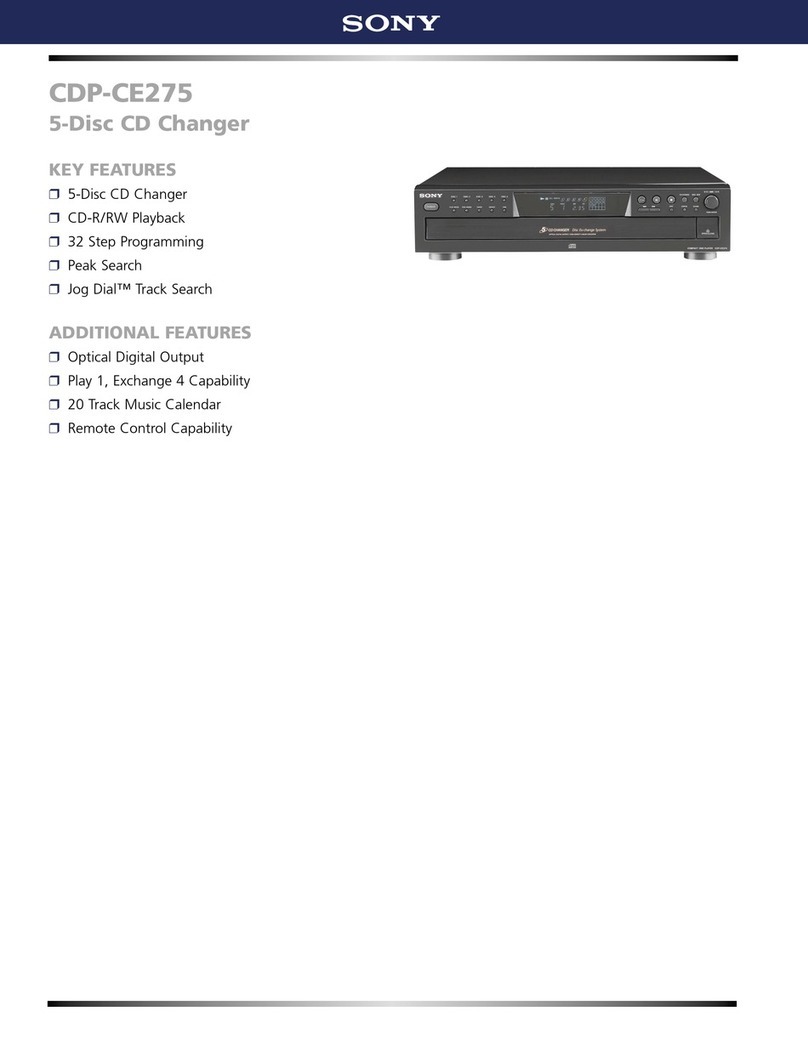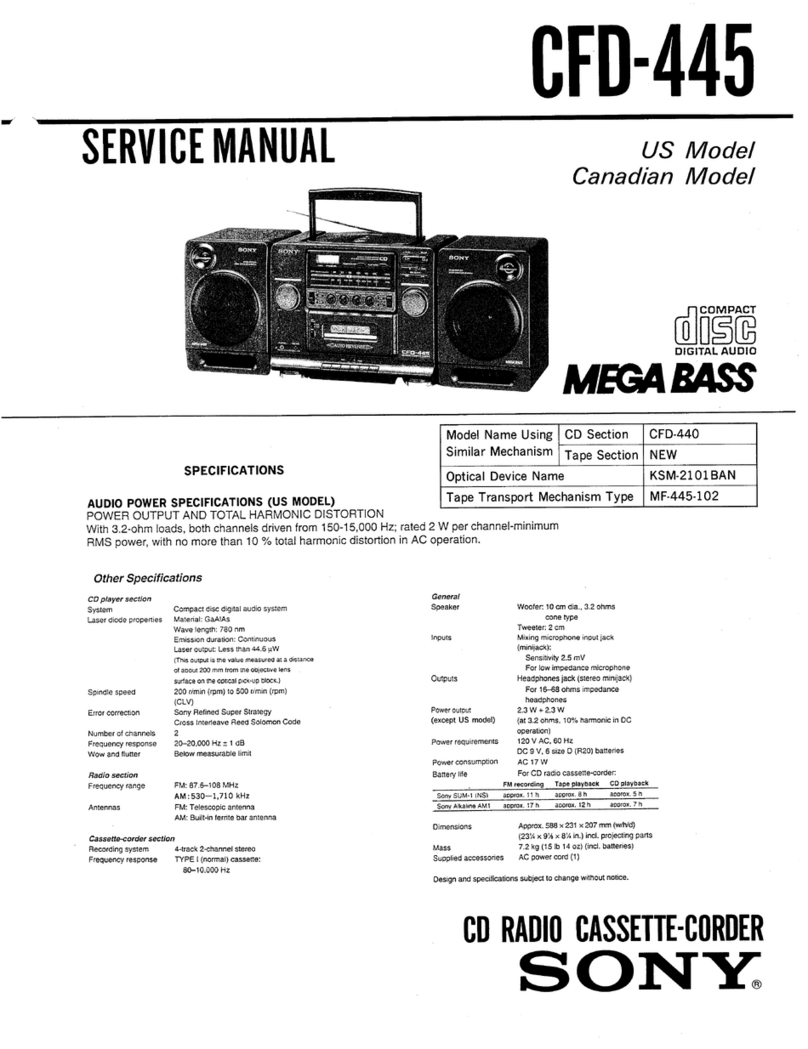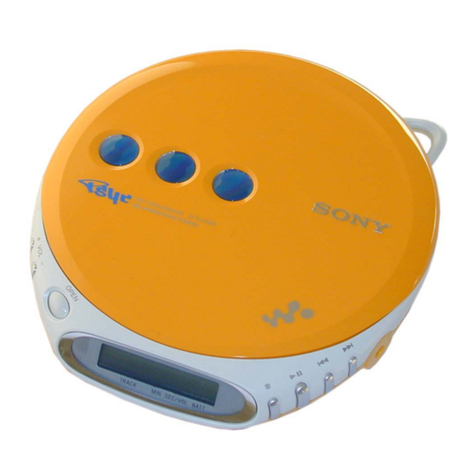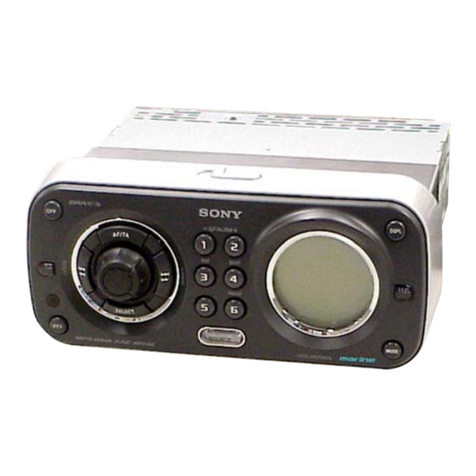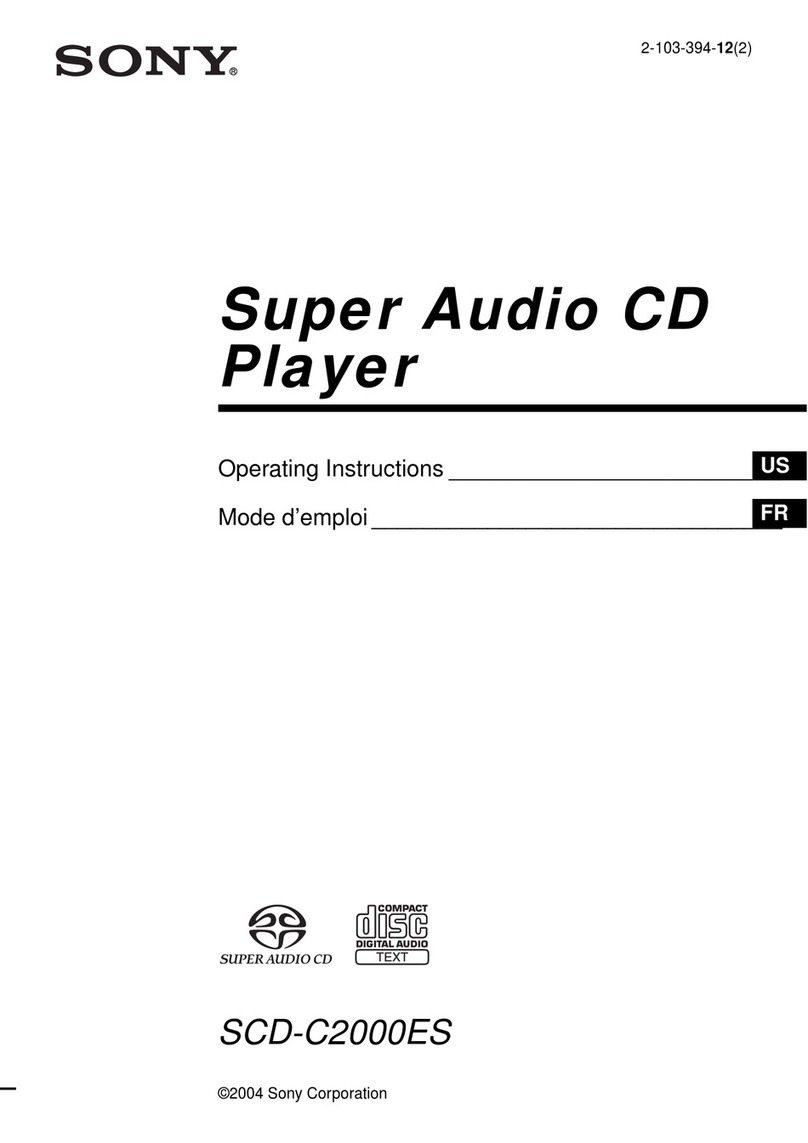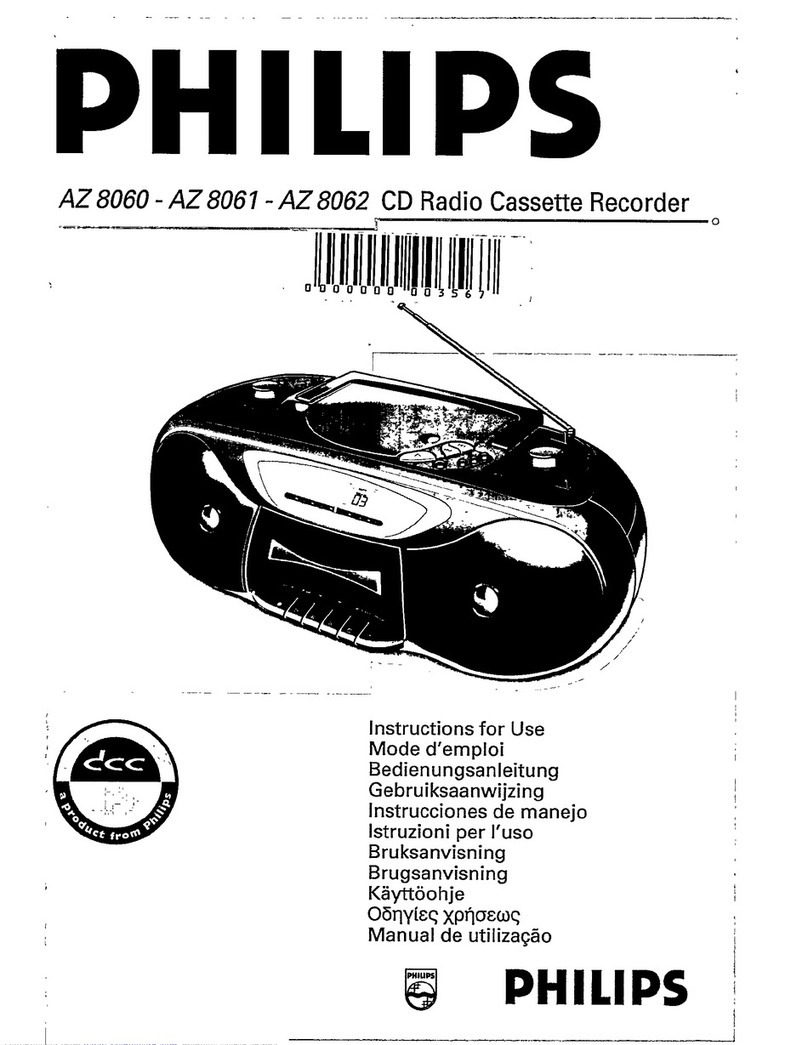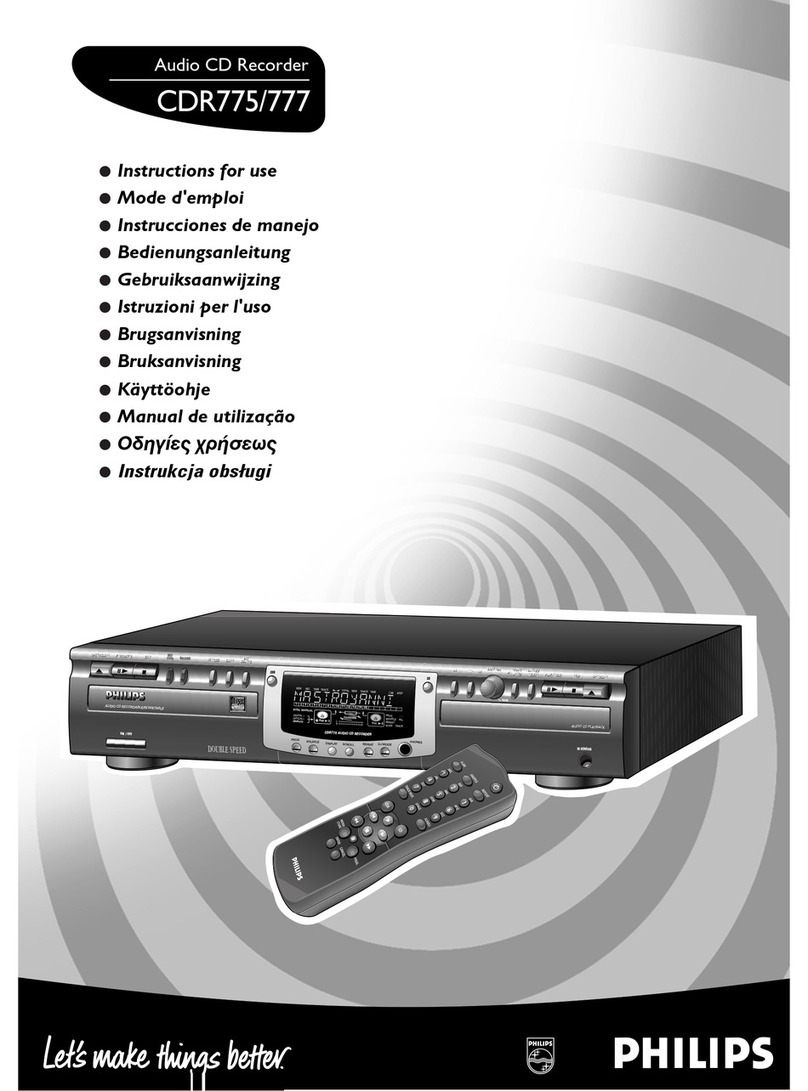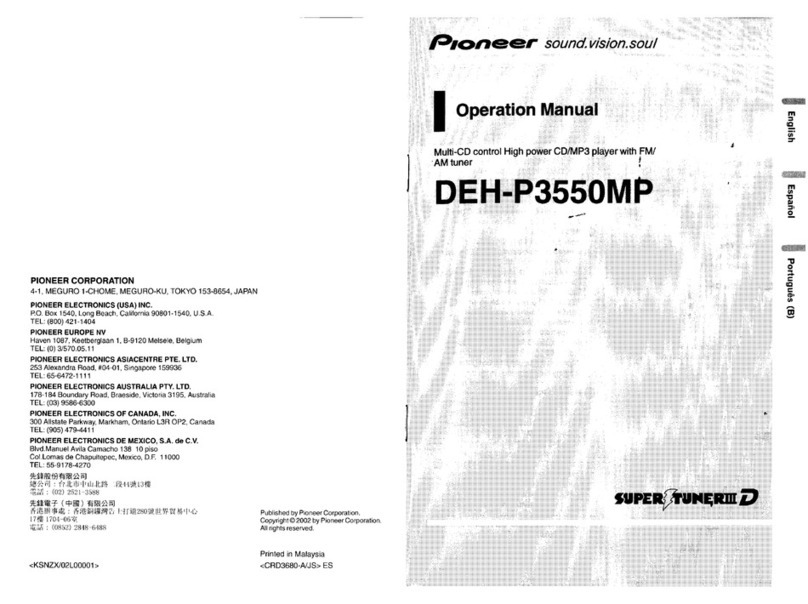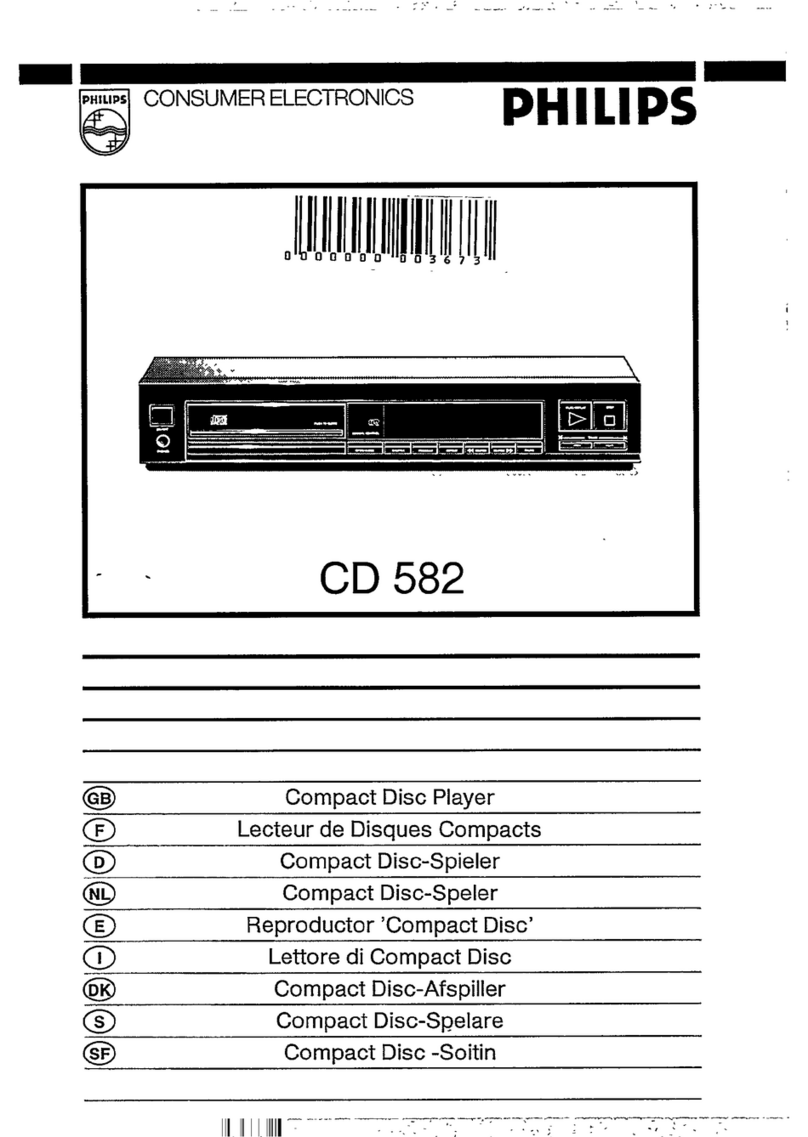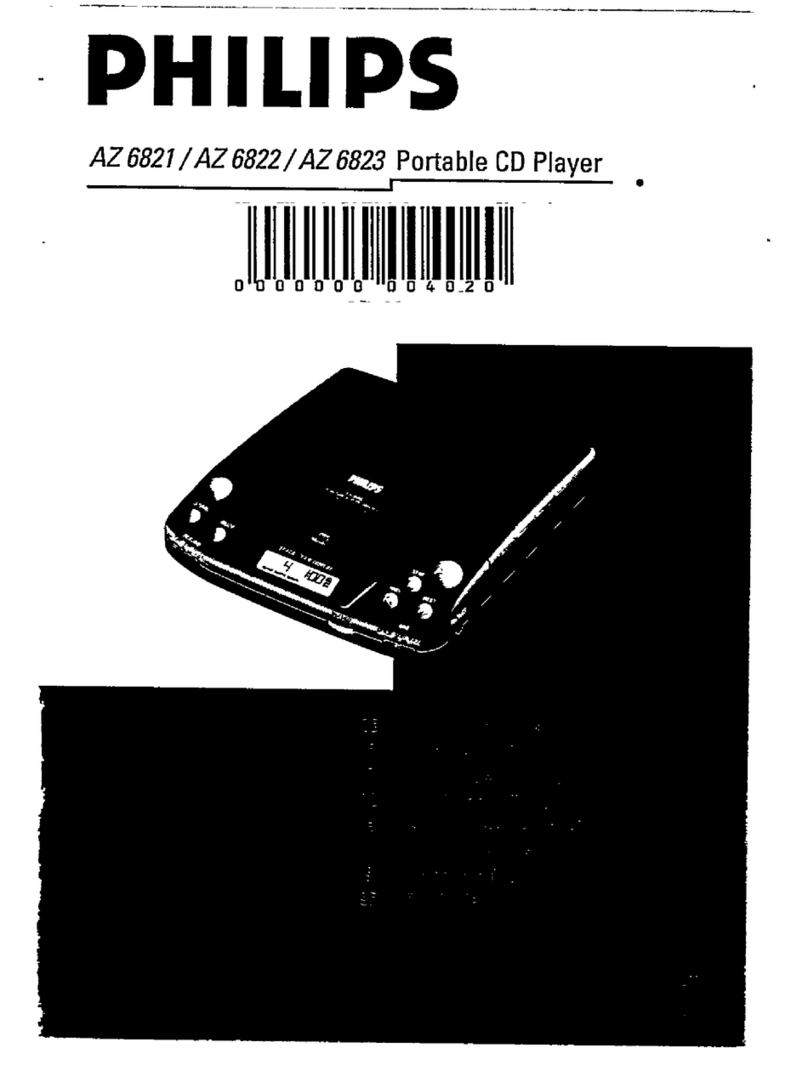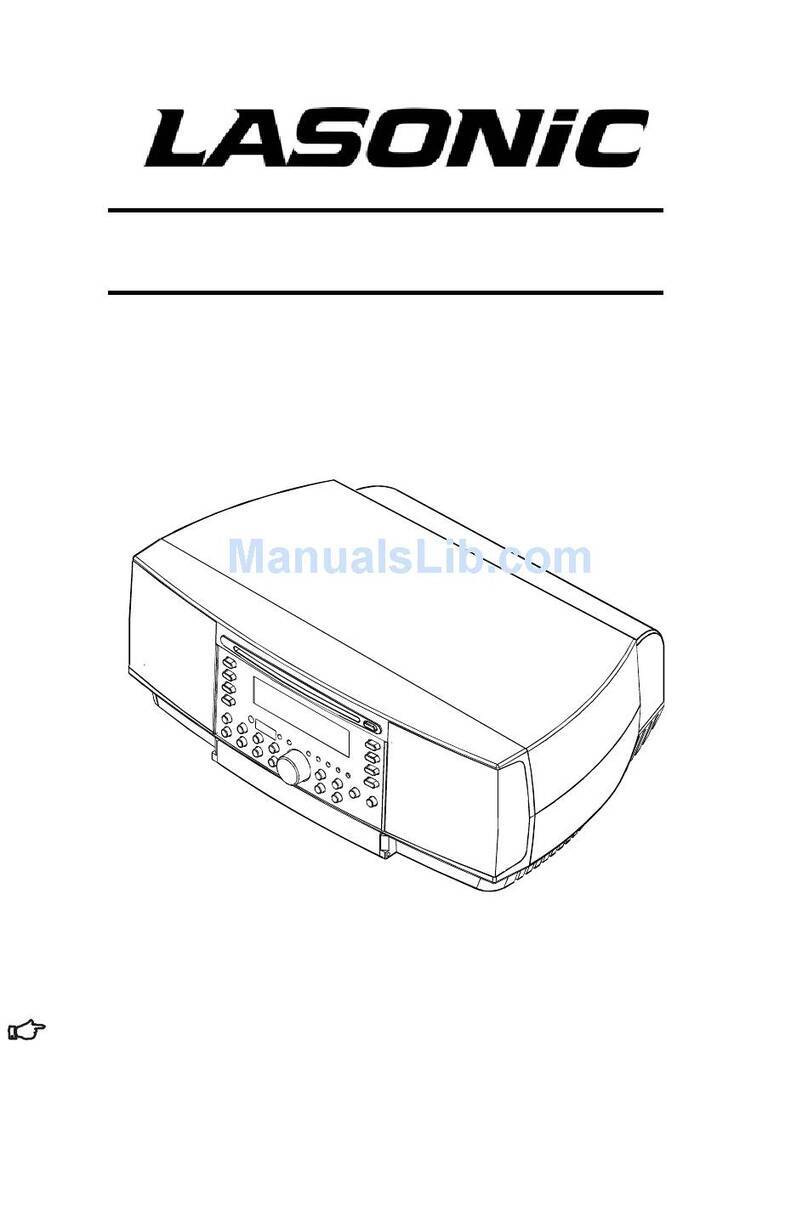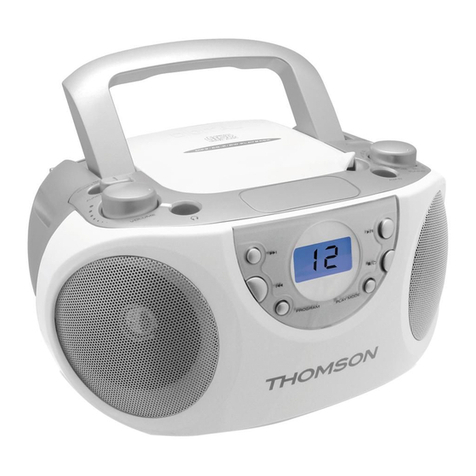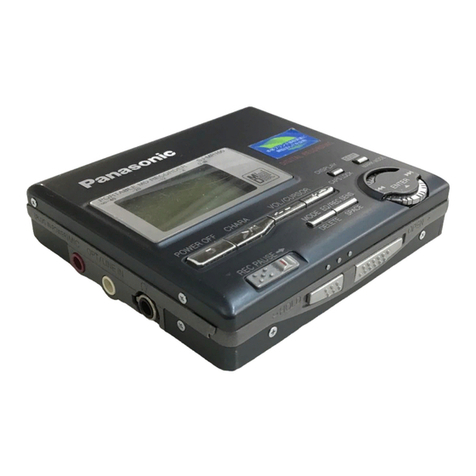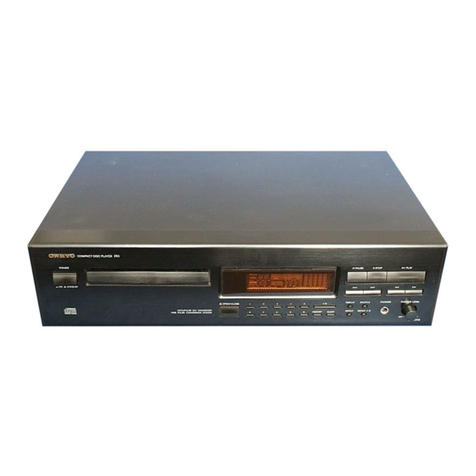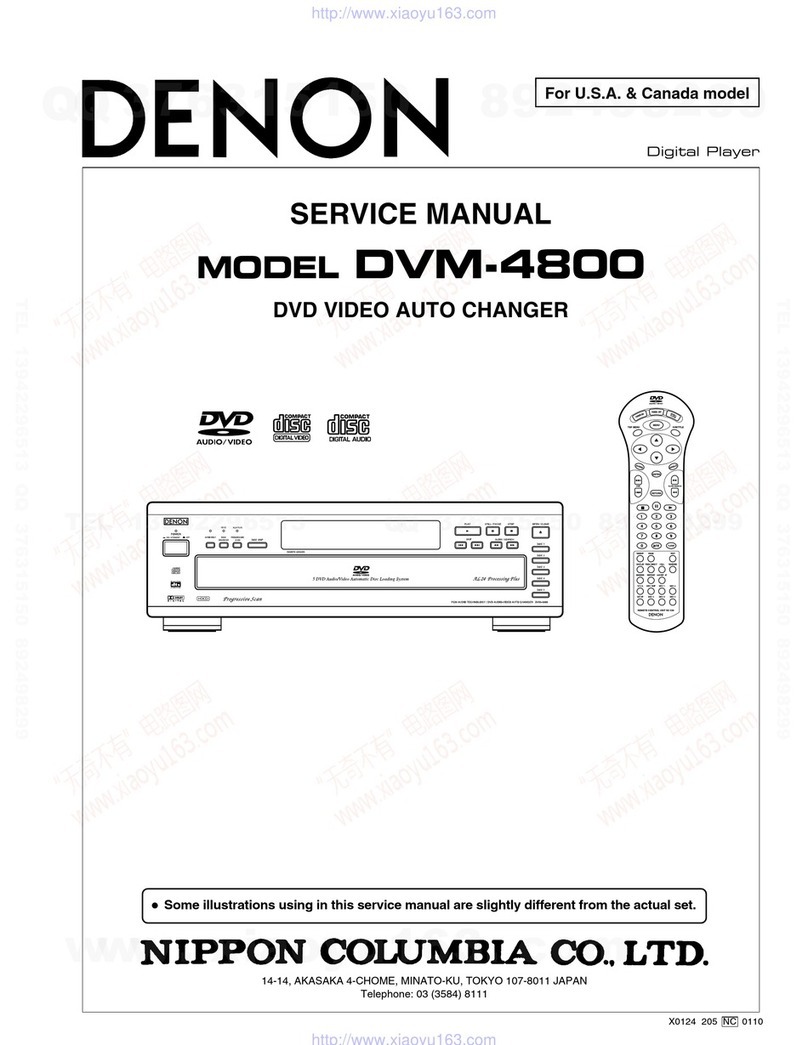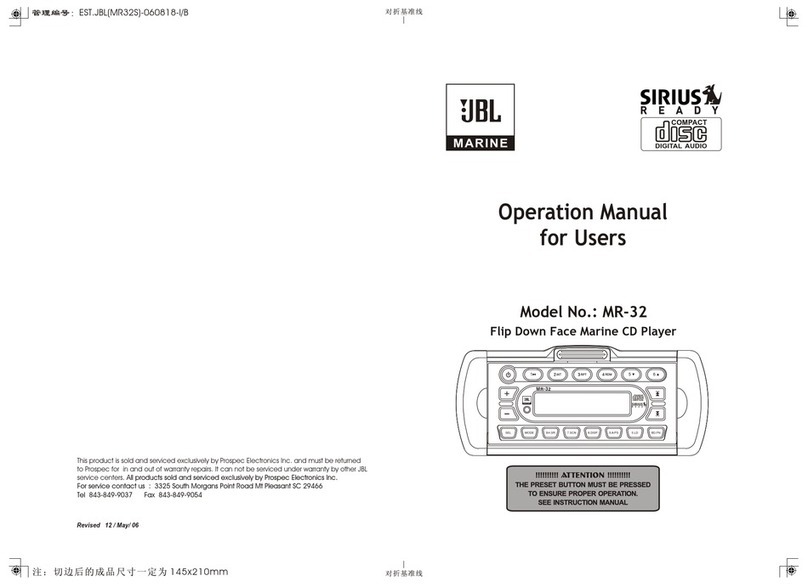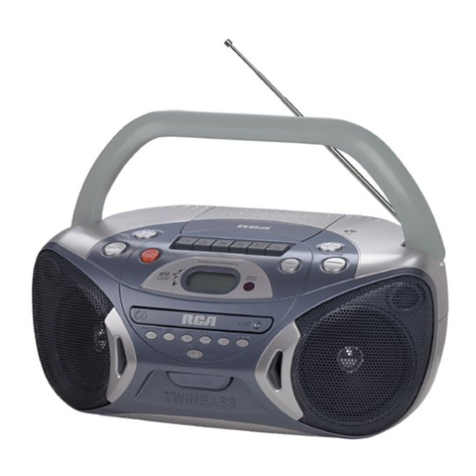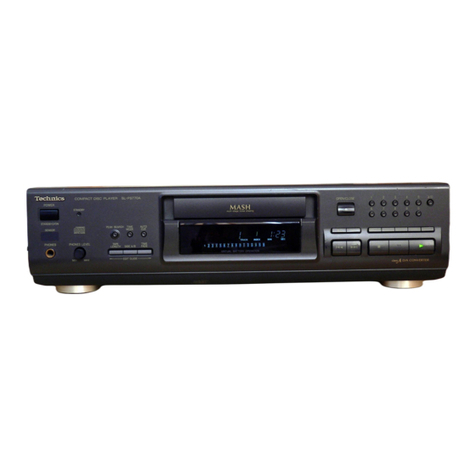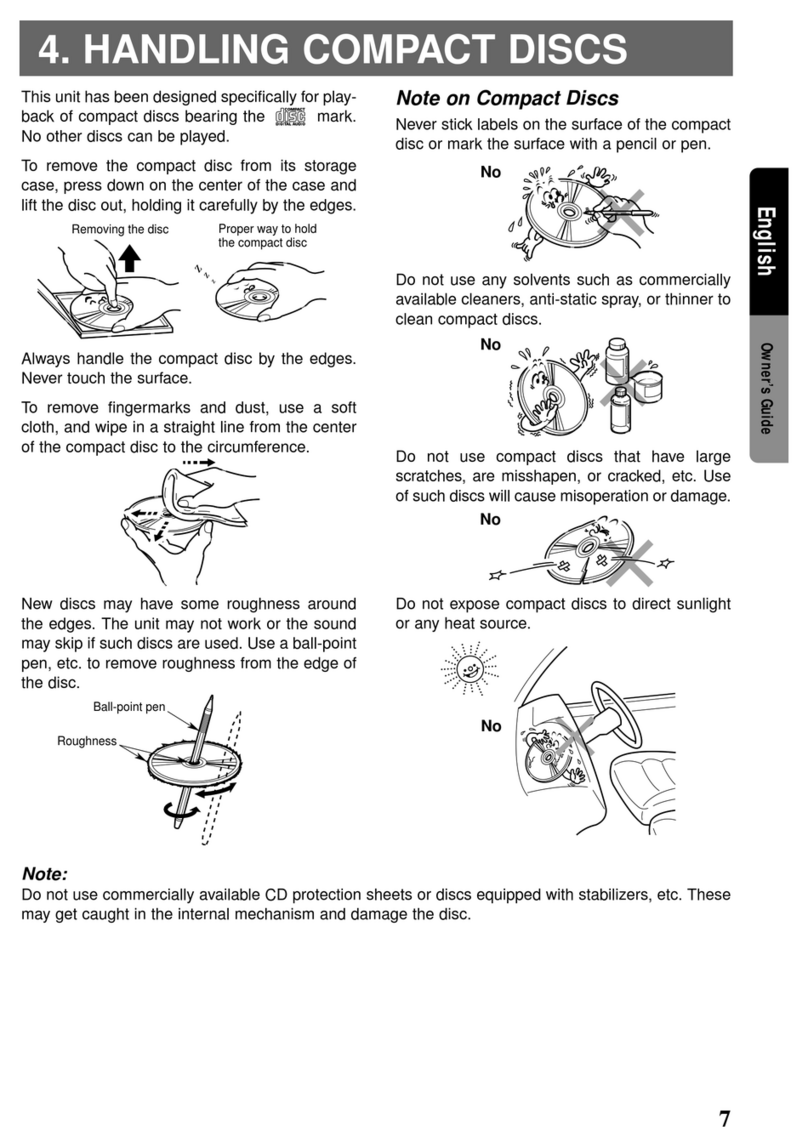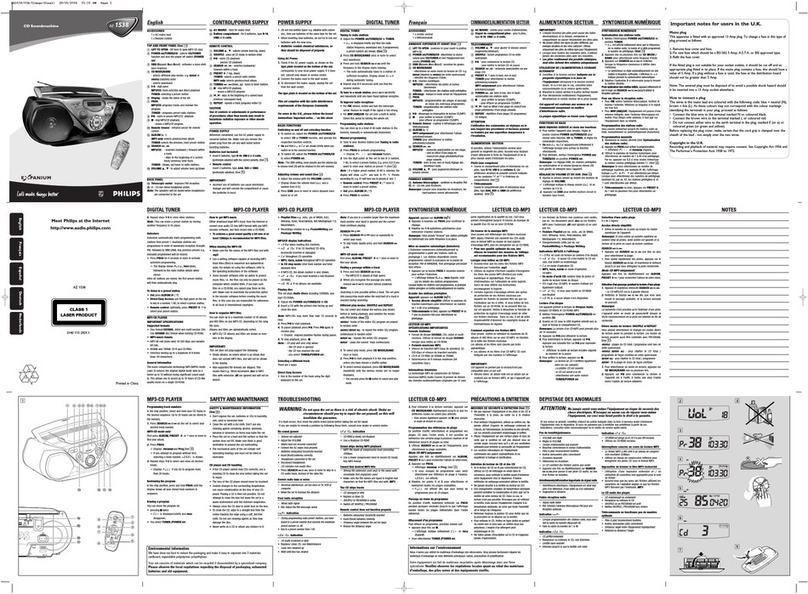– 2 –
SAFETY-RELATED COMPONENT WARNING!!
COMPONENTS IDENTIFIED BY MARK !OR DOTTED LINEWITH
MARK !ON THE SCHEMATIC DIAGRAMS AND INTHE PARTS
LIST ARE CRITICALTO SAFE OPERATION.
REPLACE THESE COMPONENTS WITH SONY PARTS WHOSE
PART NUMBERS APPEAR AS SHOWN IN THIS MANUAL OR IN
SUPPLEMENTS PUBLISHED BY SONY.
TABLE OF CONTENTS
Specifications ........................................................................... 1
1. SERVICING NOTES.................................................... 3
2. GENERAL....................................................................... 4
3. DISASSEMBLY
3-1. Cabinet (Rear) .......................................................... 6
3-2. Power Board, Back up Board, Battery Board........... 6
3-3. CD Block ASSY ....................................................... 7
3-4. Control Board ........................................................... 7
3-5. Power Key Board, Mega Bass Board,
Preset Board, Volume Board ..................................... 8
3-6. Key Board................................................................. 8
3-7. Headphone Board ..................................................... 8
3-8. REC SW Board, PB Board ....................................... 9
3-9. Mechanism Deck ...................................................... 9
3-10. Capstan/reel Motor (M301), Belt ........................... 10
3-11. Main Board ............................................................. 10
3-12. CD Board.................................................................11
3-13. Optical pick-up Block .............................................11
4. ADJUSTMENTS
4-1. Mechanical Adjustments........................................... 12
4-2. Electrical Adjustments .............................................. 12
5. DIAGRAMS
5-1. Explanation of IC Terminals..................................... 15
5-2. Block Diagrams ........................................................ 17
5-3. Schematic Diagram (Main Section) ......................... 21
5-4. Printed Wiring Boards (Main Section) ..................... 25
5-5. Printed Wiring Boards (Control Section) ................. 28
5-6. Schematic Diagram (Control Section)...................... 31
5-7. Printed Wiring Boards (CD Section) ........................ 34
5-8. Schematic Diagram (CD Section) ............................ 37
6. EXPLODED VIEWS
6-1. Rear Cabinet Section............................................... 44
6-2. Front Cabinet Section.............................................. 45
6-3. CD Section .............................................................. 46
6-4. Tape Mechanism Section-1 (MF-ZW755-117)....... 47
6-5. Tape Mechanism Section-2 (DECK A)
(MF-ZW755-117) ................................................... 48
6-6. Tape Mechanism Section-3 (DECK A)
(MF-ZW755-117) ................................................... 49
6-7. Tape Mechanism Section-4 (DECK B)
(MF-ZW755-117) ................................................... 50
6-8. Tape Mechanism Section-5 (DECK B)
(MF-ZW755-117) ................................................... 51
6-9. Optical pick-up Section (KSM-213CDM) .............. 52
6-10.Speaker Section ....................................................... 53
7. ELECTRICAL PARTS LIST.................................... 54
CAUTION
Use of controls or adjustments or performance
of procedures other than those specified herein
may result in hazardous radiation exposure.
Power consumption
AC 15 W
Battery lifeFor CD radio cassette-corder:
FM recording
Sony R20P: approx. 7.5 h
Sony alkaline LR20: approx. 22 h
Tape playback
Sony R20P: approx. 7 h
Sony alkaline LR20: approx. 20 h
CD playback
Sony R20P: approx. 3 h
Sony alkaline LR20: approx. 10 h
For memory back-up: approx. 1 year
Dimensions
Approx. 650 x 265 x 256 mm (w/h/d)
(25 5⁄8x 10 1⁄2x 10 1⁄8inches) (incl. projecting parts)
Mass Approx. 6.7 kg (14 lb. 12 oz) (incl. batteries)
Supplied accessory
AC power cord (1)
Remote control (1)
Design and specifications are subject to change without notice.
NOTES ON HANDLINGTHE OPTICAL PICK-UP
BLOCK OR BASE UNIT
The laser diode in the optical pick-up block may suffer electro-
static breakdown because of the potential difference generated
by the charged electrostatic load, etc. on clothing and the human
body.
During repair, pay attention to electrostatic breakdown and also
use the procedure in the printed matter which is included in the
repair parts.
The flexible board is easily damaged and should be handled
with care.
NOTES ON LASER DIODE EMISSION CHECK
The laser beam on this model is concentrated so as to be focused
on the disc reflective surface by the objective lens in the optical
pick-up block. Therefore, when checking the laser diode
emission, observe more than 30 cm away from the objective
lens.
Flexible Circuit Board Repairing
• Keep the temperature of the soldering iron around 270°C during
repairing.
• Do not touch the soldering iron on the same conductor of the
circuit board (within 3 times).
• Be careful not to apply force on the conductor when soldering or
unsoldering.
Notes on chip component replacement
• Never reuse a disconnected chip component.
• Notice that the minus side of a tantalum capacitor may be dam-
aged by heat.
